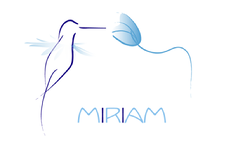Staff members involved in MIRIAM:

Prof. Dr. ir Herman van der Kooij
Dr. ir. Arno Stienen
PhD students
Y.R.J. van Veen, MSc.
Goal
The goal of the Minimally Invasive Robotics In An MR environment, MIRIAM, project is to develop technology for minimally invasive surgical procedures in an MR environment. Our group will work together with two departments in the University of Twente, Control Engineering (CE) and Signals and Systems (SAS), as well as the Radbound University Nijmegen Medical Centre (RUNMC), Demcon Advanced Mechatronics, Siemens and Xivent Medical. Our role in the project is to develop MR compatible robotic manipulator technology with applications for diagnosis and treatment of prostate cancer.
Background
Prostate cancer is the most common cancer in men in Europe [1]. Patients with a high prostate specific antigen (PSA) level and irregular digital rectal exam (DRE) are screened for prostate cancer. Current procedure for prostate cancer diagnosis is using transrectal ultrasound (TRUS) guided biopsy. However, this method misses up to 31% of prostate cancer [2]. Magnetic resonance (MR) images have better anatomical visualization compared to TRUS [3]. In previous studies, patients with previous false negative biopsy results using TRUS were diagnosed with cancer using MR-guided biopsies [4-6]. In a study at the Radboud University Nijmegen Medical Center (RUNMC) 59% of tumors were detected using MRI that previous negative TRUS biopsy results. Of these cancers 68% were in the anterior portion of the prostate; of these 57% were in the ventral transitional zone and 11% were in the peripheral zone anterior horns [4]. These areas are not regularly targeted with TRUS guided biopsy and therefore these cancers were repeatedly missed. This shows that MRI can use its improved visualization of the cancerous lesions for targeted biopsy. Unfortunately, neither MR nor TRUS images alone should be used for diagnosis or treatment planning of prostate cancer [3]. Therefore, biopsies will still be taken in order to prove the occurrence of cancer in the prostate. In order to improve biopsy accuracy, the superior visualization given using MRI can be used for more precise targeting of the lesion in MR-guided biopsies and treatments.
The goal of this project is to develop and build a MR compatible device for prostate cancer biopsy and treatment. The development of a MR compatible precision device will lead to better diagnosis of prostate cancer. This will both decrease the overtreatment of patients due to the limitations associated with PSA blood tests while reducing the incidence of false-negative biopsies. Better diagnosis will lead to better treatment decisions with the possibility of providing the groundwork to establish a case for focal therapy. With a precision device these focal therapies will result in fewer side effects and increase the quality of life for the patients.
- F. Bray, et al., "Prostate cancer incidence and mortality trends in 37 European countries: An overview," European journal of cancer (Oxford, England : 1990), vol. 46, pp. 3040-3052, 2010.
- M. Norberg, et al., "The sextant protocol for ultrasound-guided core biopsies of the prostate underestimates the presence of cancer," Urology, vol. 50, pp. 562-566, April 1997.
- F. May, et al., "Limited value of endorectal magnetic resonance imaging and transrectal ultrasonography in the staging of clinically localized prostate cancer," BJU International, vol. 87, pp. 66-69, 2001.
- T. Hambrock, et al., "Magnetic Resonance Imaging Guided Prostate Biopsy in Men With Repeat Negative Biopsies and Increased Prostate Specific Antigen," The Journal of Urology, vol. 183, pp. 520-528, 2010.
- D. Beyersdorff, et al., "MR imaging-guided prostate biopsy with closed MR unit at 1.5T: Initial results," Radiology, vol. 234, pp. 576-581, 2005.
- M. G. Schouten, et al., "The accuracy and safety aspects of a novel robotic needle guide manipulator to perform transrectal prostate biopsies," Medical Physics, vol. 37, pp. 4744-4750, 2010.
Getting involved
Are you a master or bachelor student and would you like to do a research project relating to MIRIAM, please send us (a.h.a.stienen@utwente.nl or h.vanderkooij@utwente.nl) your CV and a short motivation. Since this is a newly emerging project there are many opportunities for us to work on together.
Collaboration
Other faculties at the University of Twente
- Dr. ir. Sarthak Misra – Control Engineering (CE)
- Dr. ir. Ferdi van der Heijden – Signals and Systems (SAS)
Other
Companies
Media & publications
Acknowledgements
Current Funding
PID-ON
